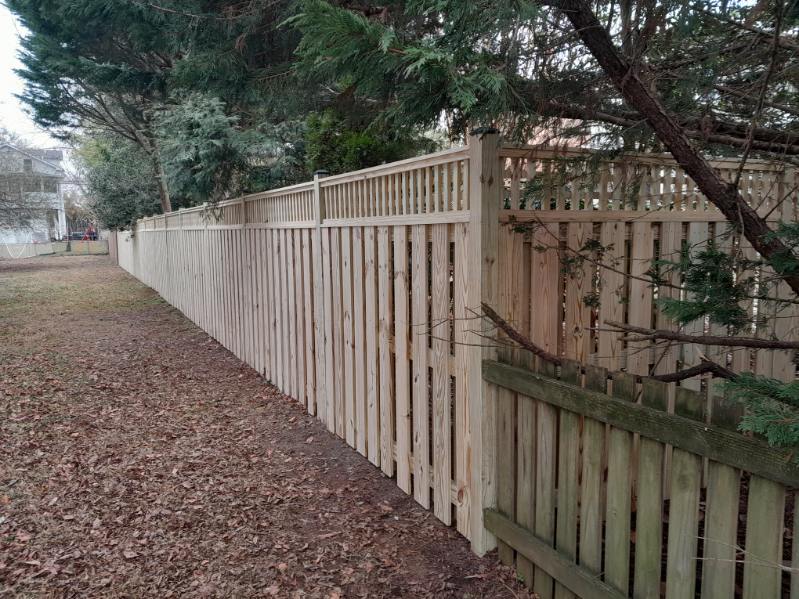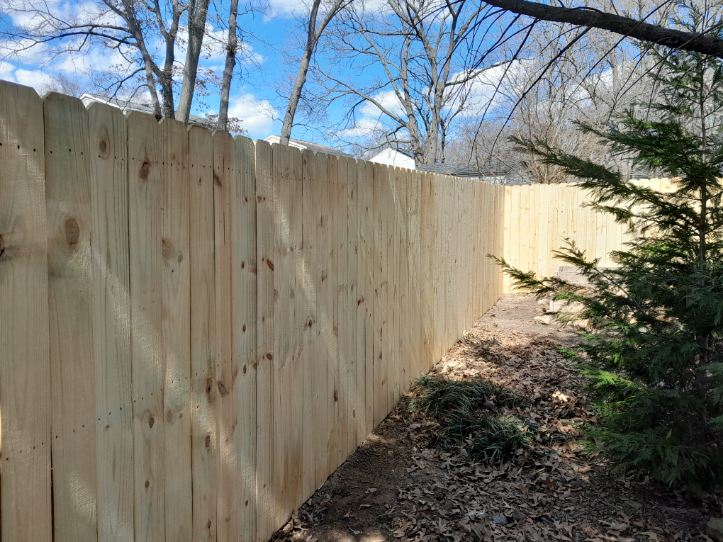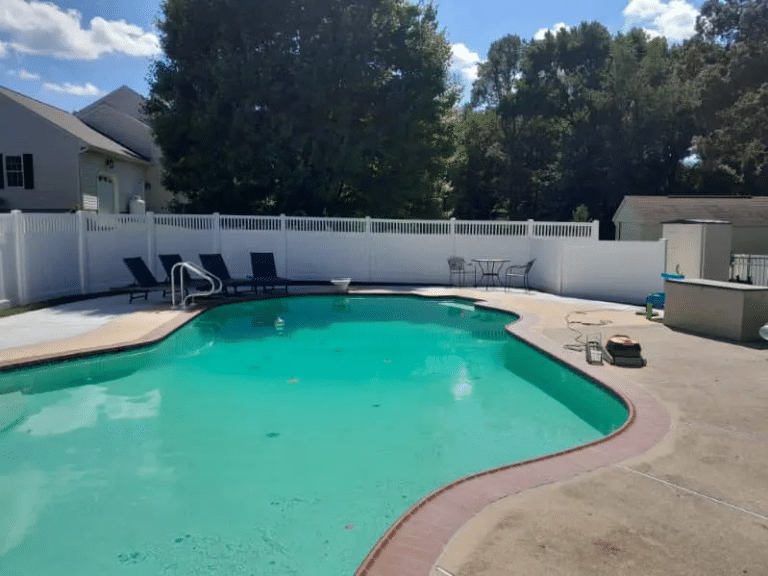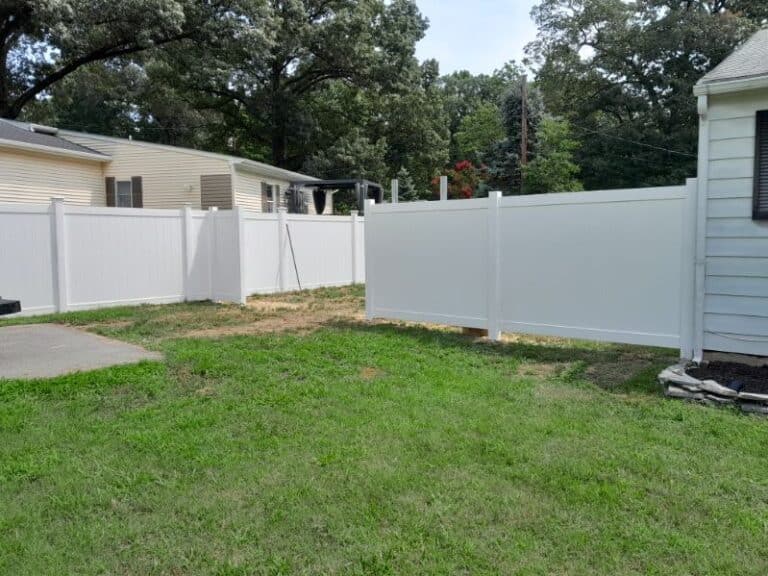South Gate is known for its dense clay soil, a challenge for many homeowners, especially when installing fence posts. Unlike sandy or loamy soils, this clay holds water, shifts with freeze-thaw cycles, and can push fence posts out of alignment over time. Understanding these soil properties is crucial for the successful fence post installation in South Gate.
Understanding South Gate’s Clay Soil Composition
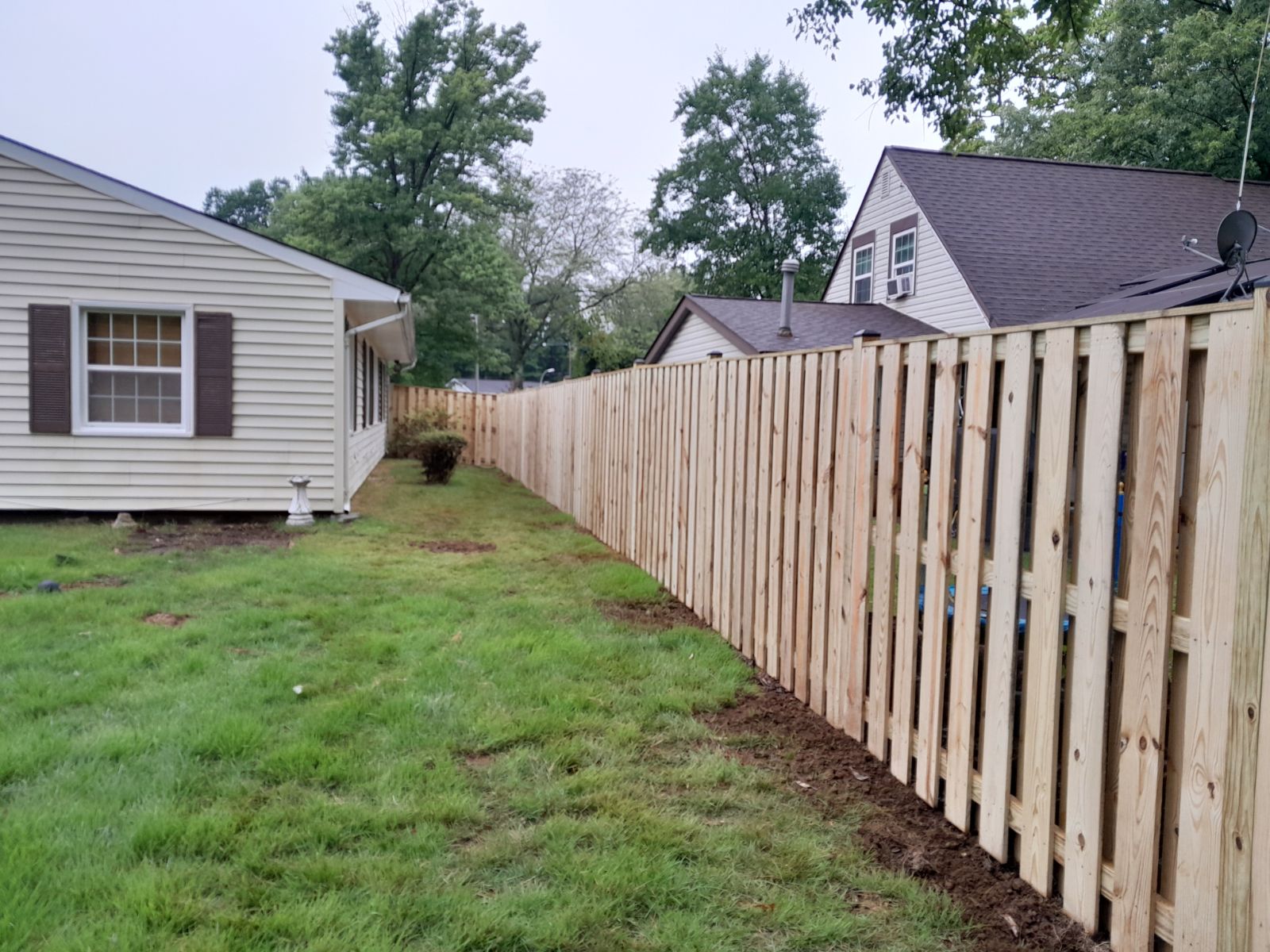
The clay soil in this area is characterized by fine particles that retain moisture and expand when wet, then shrink as they dry. This makes the soil highly dense and less permeable, leading to water pooling issues and increased pressure on fence posts. This shrink-swell behavior is intensified by the local climate’s humidity and winter storms and freeze-thaw cycles common in the Mid-Atlantic region. Such soil dynamics cause uneven soil movement that can loosen posts, especially with freeze-thaw cycles during winter.
Why Standard Installation Methods Fail in Clay Soil
Standard fence post installation methods in the South Gate area often rely on soil that drains well and remains relatively stable. In clay soil, these methods fail because the soil retains water, leading to frost heaving and soil expansion. Posts can be pushed upward or tilted as the soil moves, and inadequate drainage causes water to collect, further weakening the hold. DIY installations frequently overlook these factors, resulting in unstable fences and costly repairs.
Professional Installation Techniques for Clay Soil
Proper hole size is crucial. Holes need to be wider (12-18 inches) than holes typically installed, and much deeper to allow gravel and enough room to drain. A gravel base will be located at the bottom of the hole and allow water to drain, and provide room for hydrostatic pressures to be reduced against the posts. When using concrete to set the posts, some professionals will use a dry mixture where the water is not present until after the concrete mixture is poured into the bottom of the hole, during mixing, and that water is not trapped surrounded by soil, rock, or clay, which can compromise the post and foundation over time.
Professional installers use larger diameter holes and enhanced drainage techniques combined with soil amendments to combat the clay’s expansion and contraction. Near landmarks like East Franklin Street and South Gate Boulevard, grading the land to divert runoff is especially important to prevent water pooling around posts. Commercial projects and residential construction both benefit from these techniques. Chain link and wrought iron fences require similar foundation approaches, while aluminum fences offer corrosion resistance in wet clay conditions.
Tools and Materials for Clay Soil Installation

Specialized equipment like powered augers and post-hole diggers designed for dense clay soil makes excavation easier. Materials such as crushed stone are essential to create drainage layers. Cedar or pine posts are favored for their moisture resistance and durability in humid, clay-heavy environments. Oak posts provide superior strength for heavy gate applications.
Near community spots like South Gate Mall and Ridley Park, professional installers recommend quality lumber and hardware that withstand local weather patterns. Access control systems and temporary fencing during construction require additional planning. Consider deck integration and patio connections when planning your fence and deck project in South Gate.
Step-by-Step Installation Process
Begin by marking post locations carefully based on your fence design. Use powered augers or excavators to dig 12 to 18-inch diameter holes at least 36 inches deep, below the frost line. Place a 6-inch gravel base at the bottom for drainage and set posts level in the hole.
Pour concrete or epoxy around the post, eliminating air pockets for stability. Cure for 24 to 48 hours before applying loads or attaching panels. Backfill around the post and compact firmly. During Maryland’s wet weather periods, particularly during summer thunderstorm season, consider installing French drains or channels along fence lines near streets like North Avenue to divert water and reduce soil saturation. Industrial sites may require deeper footings and commercial fence specifications.
Common Problems and Solutions
Common issues include post-heaving caused by soil swelling, shifting due to freeze-thaw cycles, and water-related wood rot or metal corrosion. These problems can be mitigated by improving site drainage through gravel bases, French drains, and proper land grading. Selecting rot-resistant materials such as cedar or pressure-treated pine further extends fence lifespan in clay soil conditions.
Homeowners should schedule regular inspections after wet weather or snowmelt to detect early signs of post movement or water pooling. Customer service from your contractor should include guidance on seasonal maintenance. Prompt repairs help maintain customer satisfaction and prevent extensive damage.
When to Call Professionals vs. DIY
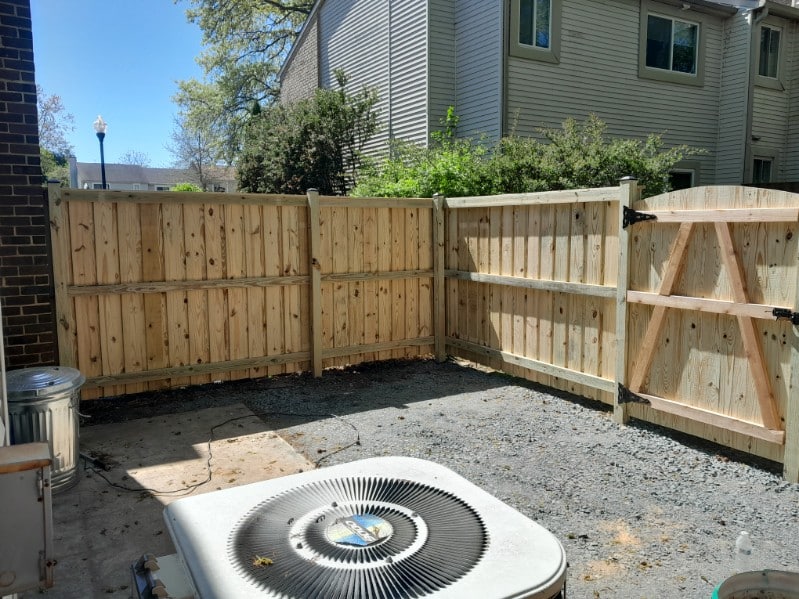
While DIY can be tempting on any budget, the complexities of clay soil demand expertise. Professionals bring specialized knowledge, tools, and materials to ensure durability. Hiring a fence contractor knowledgeable of South Gate soil conditions can prevent frequent repairs and save money in the long run. Building fences in clay requires expert knowledge of soil behavior and proper drainage techniques.
Maintenance Tips for Clay Soil Fence Posts
Seasonal inspections are critical, particularly after Maryland’s wet weather periods, during summer thunderstorm season, and harsh winters, which exacerbate soil movement and moisture retention problems. Maintaining clear drainage channels and removing debris prevents water accumulation around posts. Consider irrigation system placement to avoid over-saturating clay around fence foundations.
Create adequate space around posts for air circulation. Check aesthetics and structural integrity regularly. Customers should receive detailed maintenance information via internet resources or a direct message from their service provider. An excellent customer-forward business maintains its reputation through ongoing support.
Conclusion: Ensuring Long-Term Fence Stability
Fence posts in South Gate’s clay soil require thoughtful installation to withstand soil challenges. Professional techniques focusing on drainage, proper hole sizing, and soil stabilization ensure long-lasting results. Investing in expert installation protects your South Gate property and keeps your fence secure.
Frequently Asked Questions
How deep should fence posts be in clay soil conditions?
Fence posts should be at least 36 inches deep to reach below the frost line. This depth prevents freeze-thaw damage common in the Baltimore County climate.
What's the best drainage solution for clay soil fence installation in the South Gate?
Use a 6-inch gravel base and French drains alongside fence lines. These systems redirect water away from posts and prevent soil pressure buildup.
Can I install aluminum fences in clay soil without concrete?
Soil stabilizers work well with aluminium posts in clay. These alternatives prevent water entrapment that can weaken traditional concrete installations.
Why do fence posts shift in dense clay soil?
Clay soil expands when wet and shrinks when dry, creating movement. Poor drainage and freeze-thaw cycles worsen this natural soil behavior.
Should I hire a professional for clay soil fence installation?
Professional installation is recommended for clay soil conditions. Experts have specialized tools and knowledge to ensure long-lasting stability.
Protect Your Investment with Professional Service
Don’t risk costly repairs with improper DIY methods in challenging clay soil. All Around Fence has decades of experience working with Maryland’s clay soil conditions, serving both residential and commercial clients. Our team understands unique requirements and provides superior service with a warranty you can trust. Contact us today for a free estimate and protect your property investment with professional fencing and deck solutions.

